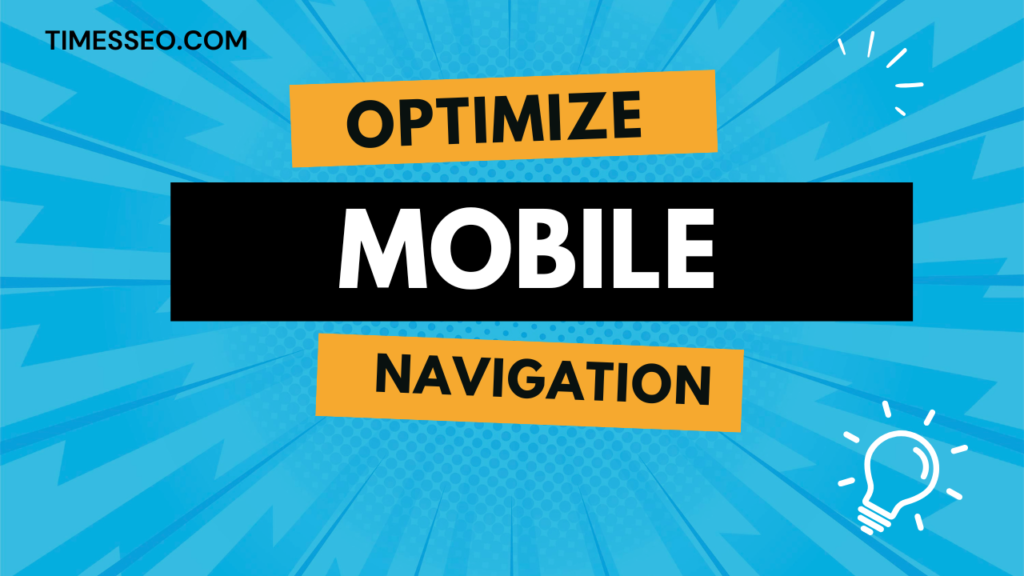
Technical Mobile SEO Audit Tips for Developers
If you’re a developer, chances are you’ve optimized a site or two for search engines. But if you haven’t paid extra attention to mobile SEO, you’re likely leaving rankings and traffic on the table.
Mobile SEO isn’t just about being “mobile-friendly” — it’s about ensuring your entire mobile experience is fast, functional, and crawlable for search engines. In this guide, we’ll break down technical mobile SEO audit tips every developer should know — and use.
Table of Contents
Introduction
Why Mobile SEO Matters More Than Ever
Google moved to mobile-first indexing, meaning it evaluates your mobile site — not desktop — when determining rankings. If your mobile experience is slow, broken, or incomplete, your visibility plummets.
Developer's Role in Mobile Optimization
As a developer, you’re not just building — you’re enabling discoverability. Mobile SEO starts with code-level improvements: from responsive design to lazy loading, you control how the site performs on small screens.
Understanding Mobile-First Indexing
What It Is and Why It Affects Your Site
These days, Google indexes and ranks your content mostly using its mobile version. If your desktop site is flawless but your mobile site lags or hides content, Google doesn’t care — mobile wins.
Google’s Focus on Mobile Experience
Everything — from mobile UX to loading times — affects crawlability and rank. Your job: Make sure mobile doesn’t just mirror desktop, but excels on its own.
Mobile-Friendly Testing Tools
Google Mobile-Friendly Test
You can use this tool to enter a URL and check if your page is responsive. It’ll highlight usability errors and what needs fixing.
Lighthouse Reports and Core Web Vitals
Lighthouse in Chrome DevTools provides deep insights into performance, accessibility, and SEO — especially helpful when debugging mobile bottlenecks.
Browser DevTools and Responsive Mode
Chrome’s responsive mode is a must for testing different screen sizes and spotting layout issues before they go live.
Page Load Speed on Mobile
Why Speed Is Crucial for Mobile UX
Mobile users are impatient. Even a 1-second delay can cost conversions. Speed is a ranking criteria for Google, particularly on mobile devices.
Optimize JS, CSS, and Fonts for Mobile
- Minify JS and CSS
- Use async/defer for scripts
- Self-host fonts and preload critical styles
Tools for Testing Mobile Speed
- PageSpeed Insights
- WebPageTest
- GTmetrix (with mobile emulation)
Responsive Web Design Essentials
Responsive Web Design Essentials
Using Viewport Meta Tag
Add this tag to ensure your layout scales properly on all screen sizes:
html
CopyEdit
<meta name=”viewport” content=”width=device-width, initial-scale=1″>
CSS Media Queries
Use breakpoints to adjust layout and content based on device width.
Avoiding Fixed-Width Layouts
Don’t hardcode pixel widths. Let elements scale naturally.
Optimize Mobile Navigation
Designing for Thumb-Friendly UX
Design with thumbs in mind — big buttons, easy-to-reach menu items, and sufficient spacing.
Collapsible Menus and Tap Targets
Hamburger menus are popular — just make sure tap targets are at least 48x48px.
Avoiding Flash and Non-Mobile Elements
Flash is outdated and unsupported. Use HTML5 alternatives instead.
Structured Data and Mobile
Importance of Schema for Mobile Search
Rich results like star ratings and FAQs stand out on mobile screens — where attention spans are shorter.
Testing with Rich Results Tool
Validate your schema using Google’s Rich Results Test.
Mobile Content Rendering
Dynamic Serving vs Responsive Design
Responsive is preferred. But if you use dynamic serving, make sure you send the correct Vary: User-Agent headers.
JavaScript Rendering and Crawlability
Verify that Googlebot can view your JavaScript-rendered content. Avoid hiding essential content behind scripts.
Image Optimization for Mobile Devices
Using Modern Formats (WebP, AVIF)
This tool allows you to enter a URL and determine whether your page is responsive.
Responsive Images with srcset and sizes
Serve graphics according to the size and resolution of the screen. For instance:
html
CopyEdit
<img src=”img.jpg” srcset=”img-480.jpg 480w, img-800.jpg 800w” sizes=”(max-width: 600px) 480px, 800px”>
Lazy Loading Images Properly
Use native loading=”lazy” or plugins like LazyLoad.js.
Avoiding Intrusive Interstitials
What Google Considers Intrusive
Popups that block the main content or are hard to dismiss will hurt rankings.
Best Practices for Mobile Popups
Use banners, not full-screen popups
Delay popups until after user interaction
Make them easy to close
Mobile UX and Core Web Vitals
LCP, FID, CLS Optimization on Mobile
LCP: Prioritize largest content (usually hero images or headings)
FID: Defer third-party scripts
CLS: Use fixed dimensions for images and elements
Mobile-Specific Performance Fixes
Inline critical CSS
Eliminate render-blocking resources
Minimize font swaps
Using AMP (Accelerated Mobile Pages)
What is AMP and Do You Still Need It?
AMP offers lightning-fast mobile pages. However, it’s less essential now with advances in standard web performance.
Handling Mobile Redirects
Detecting Device Correctly
If using redirects, make sure you’re accurately detecting device type to avoid misfires.
Avoiding Faulty Redirect Loops
Always test redirects on actual devices — avoid sending mobile users to desktop pages or vice versa.
Testing Mobile SEO in Real Devices
Emulators vs Real-World Testing
While emulators are fantastic, actual devices show actual issues. Test on slow connections and budget phones too.
Tools Like BrowserStack, LambdaTest
Use these for cross-device/browser testing without needing a full device lab.
Regular Mobile SEO Audits
Creating a Mobile SEO Checklist
Have a routine checklist: test speed, responsiveness, crawlability, UX, and content parity.
Setting a Monthly Audit Routine
Make mobile SEO audits a monthly habit — especially after updates or redesigns.
Conclusion
Mobile SEO is no longer optional — it’s the default SEO in a mobile-first world. As a developer, your role in optimizing the technical side of mobile UX is critical. Whether you’re speeding up load times, refining layouts, or debugging crawl issues — every second and pixel counts. So, gear up, audit your site, and make sure your mobile experience is as strong as your code.
Frequently Asked Questions
Yes, mobile SEO focuses on usability, performance, and responsiveness for mobile devices, while desktop SEO often has more flexibility with layout and content.
At least once a month, or after significant design or plugin updates.
Google Lighthouse, Mobile-Friendly Test, PageSpeed Insights, BrowserStack, and real device testing.
Absolutely. If your mobile version is poor, it can tank your search rankings even if the desktop version is perfect.
Yes, if not implemented correctly. It can block rendering or hide content from crawlers.
Table of Contents
Popular Posts
-
 Affordable Technical SEO Audit for Small Business: A Complete Guide26 Jun 2025 Blog
Affordable Technical SEO Audit for Small Business: A Complete Guide26 Jun 2025 Blog -
 How to Get an Affordable Technical SEO Audit for Small Business27 Jun 2025 Blog
How to Get an Affordable Technical SEO Audit for Small Business27 Jun 2025 Blog -
 The Ultimate Local SEO Audit Checklist for Startups28 Jun 2025 Blog
The Ultimate Local SEO Audit Checklist for Startups28 Jun 2025 Blog -
 Local SEO Audit Checklist for Startups: A Beginner’s Guide28 Jun 2025 Blog
Local SEO Audit Checklist for Startups: A Beginner’s Guide28 Jun 2025 Blog -
 Top On-Page SEO Audit Steps for Service Websites Every Business Should Know29 Jun 2025 Blog
Top On-Page SEO Audit Steps for Service Websites Every Business Should Know29 Jun 2025 Blog -
 Technical SEO for WordPress: The Ultimate Beginner’s Guide01 Jul 2025 Blog
Technical SEO for WordPress: The Ultimate Beginner’s Guide01 Jul 2025 Blog -
 The Impact of On-Page SEO Audit Steps for Service Websites on UX01 Jul 2025 Blog
The Impact of On-Page SEO Audit Steps for Service Websites on UX01 Jul 2025 Blog -
 Technical Mobile SEO Audit Tips for Developers02 Jul 2025 Blog
Technical Mobile SEO Audit Tips for Developers02 Jul 2025 Blog -
 Complete SEO Backlink Audit Guide for Better Google Rankings03 Jul 2025 Blog
Complete SEO Backlink Audit Guide for Better Google Rankings03 Jul 2025 Blog -
 Boost Your Rankings with Technical SEO for WordPress01 Jul 2025 Blog
Boost Your Rankings with Technical SEO for WordPress01 Jul 2025 Blog






